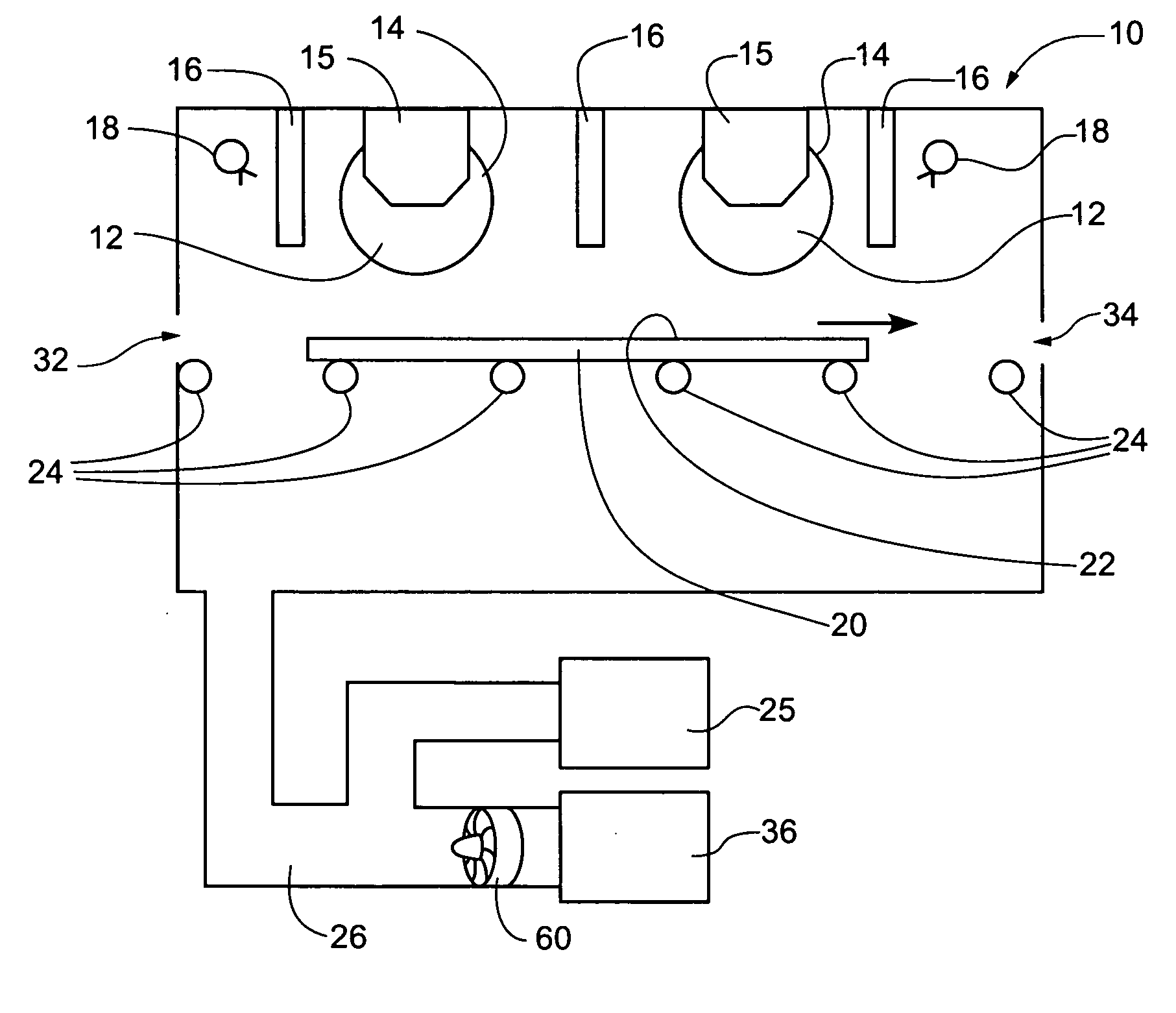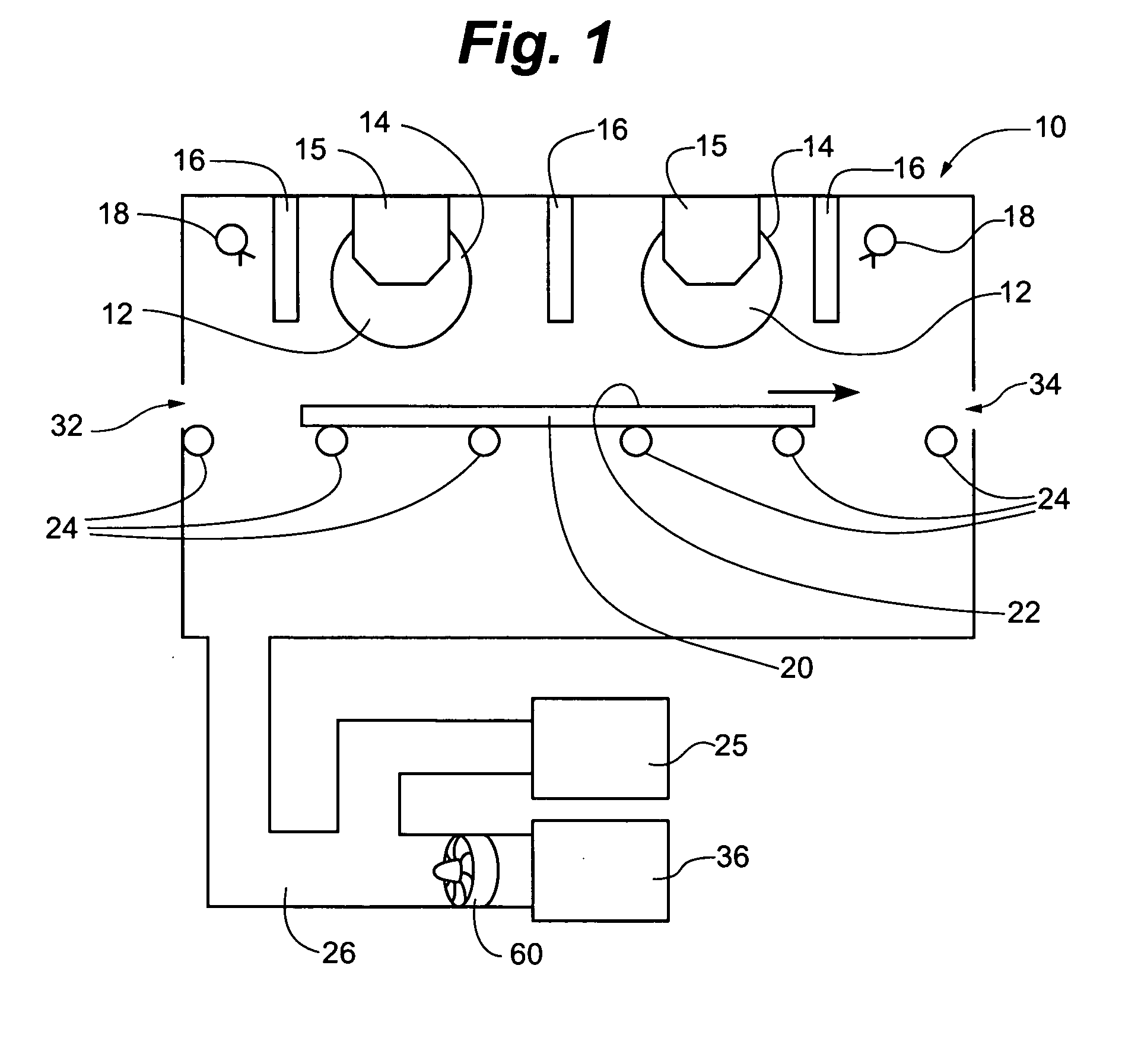Deposition chamber desiccation systems and methods of use thereof
a desiccation system and desiccation chamber technology, applied in drying machines, lighting and heating apparatus, furnaces, etc., can solve the problems of difficult removal of water, reduced thin film quality, and higher contamination levels
- Summary
- Abstract
- Description
- Claims
- Application Information
AI Technical Summary
Benefits of technology
Problems solved by technology
Method used
Image
Examples
Embodiment Construction
[0019] To better illustrate the invention, the preferred embodiments will now be described in more detail. Reference will be made to the drawings, which are summarized above. Reference numerals will be used to indicate parts and locations in the drawings. The same reference numerals will be used to indicate the same parts of locations throughout the drawing unless otherwise indicated.
[0020] The present invention provides a system and method in which contaminating moisture within a deposition chamber is removed prior to use by flushing the deposition chamber with dry air. The deposition chamber is preferably part of a magnetron sputtering system. However, the described system and method of drying may also be used for non-magnetic sputtering deposition chambers. Dry air, preferably hot dry air, is delivered from a desiccation system through delivery lines at or above atmospheric pressure in order to flush the chamber of moisture. The deposition chamber and the drying apparatus used f...
PUM
| Property | Measurement | Unit |
|---|---|---|
| Temperature | aaaaa | aaaaa |
| Temperature | aaaaa | aaaaa |
| Temperature | aaaaa | aaaaa |
Abstract
Description
Claims
Application Information
 Login to View More
Login to View More - R&D
- Intellectual Property
- Life Sciences
- Materials
- Tech Scout
- Unparalleled Data Quality
- Higher Quality Content
- 60% Fewer Hallucinations
Browse by: Latest US Patents, China's latest patents, Technical Efficacy Thesaurus, Application Domain, Technology Topic, Popular Technical Reports.
© 2025 PatSnap. All rights reserved.Legal|Privacy policy|Modern Slavery Act Transparency Statement|Sitemap|About US| Contact US: help@patsnap.com



